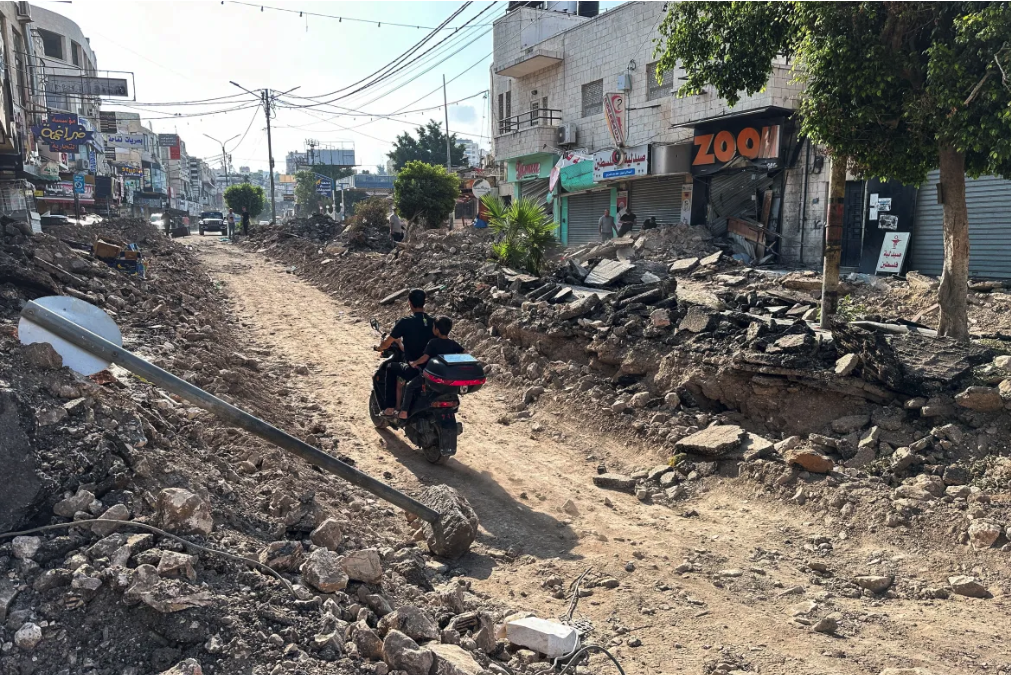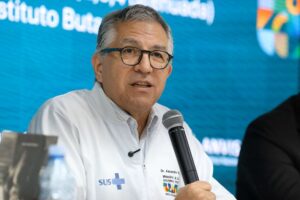
Published 09/07/2024 12:55
Just as they claimed to dismantle Hamas in the Gaza Strip in order to carry out the largest Palestinian genocide of the new century, since the end of August the Israelis have been advancing on the gigantic territory of the West Bank. After invading the cities, bulldozers enter the streets, destroying all the road infrastructure, including the sewage pipes. As a result, Jenin, Tubas and Tulkarem are left with completely destroyed streets, without sewage or water supply, and dozens of people dead.
In addition to the more than 40,878 people killed in Gaza (counting only the bodies that arrived at hospitals, not including those buried in rubble), it is now time to count the genocide in the West Bank, with 692 people killed (among them 156 children and 9 women) and more than 5,700 injured. In the city of Jenin, the Palestinian population mourned the bodies of 10 young people killed during the Israeli aggression that lasted 10 days. Eight of them were residents of the Jenin refugee camp, and the other two were from the city.
The offensive left a trail of destruction, and local authorities have already begun reconstruction efforts. Many of these people are killed during raids by armed Israeli settlers, who seize Palestinian properties under the protection of Israeli security forces.
This week, Israeli forces launched the largest military operation in the region in more than two decades. The offensive, now in its tenth day, has resulted in the deaths of dozens of Palestinians. Israeli troops, accompanied by armored vehicles, drones and helicopters, attacked the cities of Jenin, Tubas and Tulkarem, focusing on targets such as homes and strategic facilities. The offensive has left a trail of destruction, and local authorities have already begun reconstruction efforts.
The Israeli military justified the operation as a move to dismantle improvised explosive devices allegedly planted by Palestinian militants, especially those from Hamas and Islamic Jihad. However, the offensive has been criticized by human rights groups and the local population, who see the action as collective punishment.
“Collective punishment and widespread destruction”
Images from the affected areas show scenes of massive destruction. Roads, traffic signs and even trees were flattened. Palestinian residents say the attack was not just on militants, but also on civilian infrastructure and the homes of ordinary families.
“They force us to choose: either we submit to their policies, or we face massive destruction,” said one affected resident in Jenin.
The local population is isolated, without access to basic supplies such as water and electricity. In addition, ambulances and medical teams have been prevented from entering conflict areas, worsening the humanitarian crisis.
The violence also spread to other parts of the West Bank. Israeli troops invaded Ya’bad, southwest of Jenin, and Beit Ta’amr, east of Bethlehem. Checkpoints were set up at the entrances to the city of Jericho, while an air checkpoint was set up at the entrance to the village of Shuqba, north of Ramallah.
Armed settlers continued to carry out attacks against Palestinians. In Zanuta, a group was attacked, and a tent was set up by settlers at an archaeological site in Masafer Yatta, south of Hebron, transforming a local residence into a new colonial outpost. In addition, settlers cut down olive trees and destroyed fences on farmland east of Nablus, burned vehicles in Deir Dibwan, east of Ramallah, and spray-painted racist slogans on a car in Abu Falah, northeast of Ramallah.
Palestinian girl Bana Baker, just 13 years old, was killed on Friday afternoon when she was shot in the chest by Israeli occupation forces in her home in the village of Qaryut, south of Nablus. Bana’s father reported that his daughter was inside her room, accompanied by her sisters, when she was hit by the bullets. The attack occurred during an incursion by Israeli settlers, who were being protected by the occupation forces.
In another brutal incident, young Bilal Dar Atta was beaten by Israeli soldiers while passing through a checkpoint, resulting in the amputation of two fingers and fractures in two others.
This was not the only incident of violence in the area. Earlier, a 34-year-old man was wounded in the hand by Israeli soldiers, while another man, aged 30, suffered bruises after being attacked by settlers in the same village. The Qaryut community lives under constant threat of attack, with violence escalating from settlers who often act with military support.
Resistance and repression: the cycle of violence increases
In recent years, there has been an increase in armed resistance by young Palestinians, especially those from refugee camps such as Jenin. This phenomenon, according to experts, is linked to the growth of illegal Israeli settlements in the West Bank, often accompanied by episodes of violence against Palestinians.
The Israeli military operation is seen as an attempt to neutralize this growing resistance. However, Palestinian groups and the population itself denounce the lack of accountability for Israeli settlers involved in attacks on Palestinians.
International reactions and humanitarian impact
The Israeli offensive has already drawn criticism from several international organizations, which have called for restraint and an end to hostilities. The exact number of injured and dead could rise as the occupation forces continue to restrict access by rescue workers and journalists to the worst-affected areas.
In addition to the Palestinians killed, there were reports of Israeli soldiers injured and at least one Israeli soldier killed during the operation. Tensions remain high across the occupied West Bank as Palestinians face displacement, destruction of their homes and a growing sense of insecurity.
Source: vermelho.org.br

